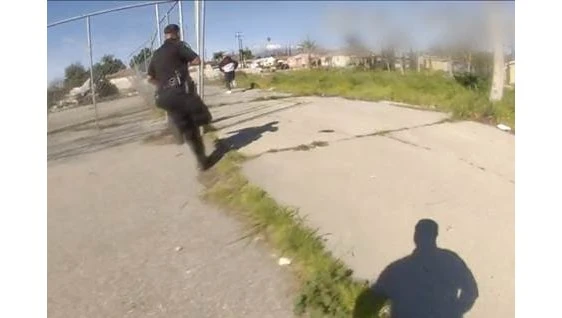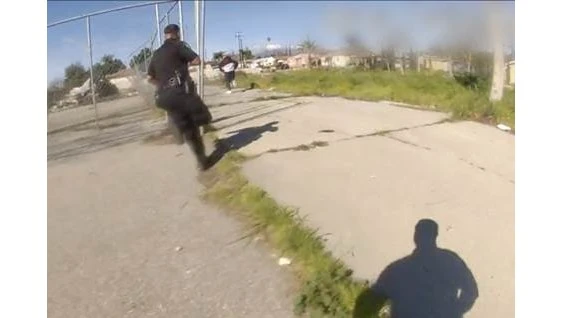[ad_1]

Share and speak up for justice, law & order…
By Chief Joel F. Shults, Ed.D
Twenty-eight-year-old Germaine Davansha Small wasn’t on a casual stroll on the first weekend of April. Hiding a pistol under a shirt draped over his shoulder, Small first engaged in a brief contact with the occupants of a car that had just pulled into the parking lot of a St. Petersburg, FL food mart around 5:30 p.m. Witnesses heard a gunshot and saw the car speed off. Small then walked about a block before stopping at the home of an elderly sight-impaired man standing in the front yard of the house. Small fired two shots at the man.
Small then trespassed on another home and was told to leave and began to walk away. St. Petersburg police Officer Dale Johnson saw the suspect in an open lot where Small was walking when Small began to run, pointing his gun and firing toward Johnson. Small ran around a nearby house with Johnson in a foot pursuit, firing at Small and striking him in the head. Small continued to flee but dropped the gun and was apprehended by the officer.
Foot pursuits are not uncommon. These headlines are from just the past few weeks: “Foot chase ends in shooting of teen by police on Detroit’s west side;” “6th DUI arrest came after pickup and foot chase, previous one was on lawnmower, Deleware police say”; “St. Louis officer hospitalized following foot pursuit, two suspects in custody;” “NH troopers shoot and kill armed man during a foot pursuit with a police dog.”
For most diligent patrol officers getting a fleeing suspect becomes personal. How dare they! But the decision to start and continue a foot pursuit can be as complex as a high-speed vehicle pursuit. The first question to be answered is whether the officer knows why a person is running. As tempting as it is to assume that when someone sees the badge or patrol car and sprints away they are a criminal, the mere fact of running does not justify an arrest. Making sure to announce “Police! Stop!” can avoid a suspect’s later claim that they thought they were being robbed.
The ability to complete a pursuit and subsequent arrest depends largely on the officer’s physical fitness, equipment, and safety. A foot pursuit not only requires the agility and energy to run, but at the end of that pursuit, the officer must anticipate a physical struggle and the potential for using force options including deadly force. Having the reserve strength to engage in a fight at the end of the flight, or to manipulate and accurately employ a firearm, Taser, or other restraint is a calculation the officer must make to decide whether to keep running or go to another plan.
Having secure gear is another essential of an active foot pursuit. Officers are carrying more equipment than ever. It may be attached to a vest, belt, pocket, or epaulet by clips, snaps, or Velcro, but the officer needs to know they can keep it during the jostle of jogging and jumping fences. Doing a jump test in full gear is a good way to see what is most likely to fall off. A foot pursuit followed by a search and rescue mission for the cell phone, flashlight, radio, or other high-value item along the path is a race against anyone else who might claim finders’ keepers. And speaking of keeping one’s equipment, leaving behind an unsecured patrol car can lead to a lost suspect and a lost patrol car.
With all due respect to rabbits and suspects, both often have a strategy when being pursued. If they know the territory better than the pursuing officer, the officer can be led to a vulnerable situation. Darkness, dead ends, clotheslines, creeks, and colleagues can be waiting for an unsuspecting officer operating on the escapee’s turf. Passengers bailing out of a car on a traffic stop can leave behind the most dangerous person that an unthinking officer might pass while running after another. The officer must always be aware of where they are to make other officers aware of where to arrive to assist. There are no street signs in the woods or alleyways.
Foot chases can be honorably abandoned when the officer is not safely able to pursue into what is often a fatal funnel.
This article originally appeared at the National Police Association and was reprinted with permission.
Share and speak up for justice, law & order…
[ad_2]




